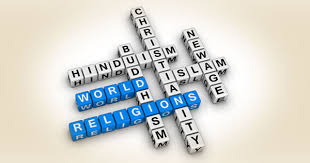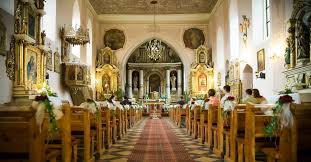
The difference in religious faith
Order instruction
Here are the instructions from my teacher…
You can use the information from the class modules and textbook, but you also need at least two additional, outside sources. Your sources should be peer reviewed; in other words, books or articles from J-Stor or other such databases. You must use the MLA style for all references and bibliography page. You must use parenthetical notations in your paper. Your paper can be no less than 1500 words (five pages, double-spaced, 12 point font) and no more than 2000. This word-count does not include your bibliography or cover page.
Since you don’t have the information from class… Please use 5 sources from databases as listed above…
SAMPLE ANSWER
Introduction
The difference between different religious faiths goes far beyond the names that distinguish them from others. This is a phenomenon that has been in existence since before the dawn of civilization. It is something that applies to contemporary examples of organized religion as well as ancient forms of religion. The differences in question here refer to the attitude and belief towards different spiritual concepts such as mortality, life, the manifestation of divinity, evil and also the relationship that exists between humanity and the deities that are worshipped. For this exercise, this analysis will be conducted on two ancient religions, namely traditional Egyptian Religion and the second being Mesopotamian religion. These are faiths that were practiced by the world’s pioneer civilizations such as the Egyptians known for their monarchies and great civil construction projects from millennia gone by. Mesopotamia on the other hand was home to the word’s first known urban settlement or city following the adoption of agriculture by the inhabitants of the land found between the rivers Euphrates and Tigris. These religions are termed as ancient because it is historically believed that they predate all of the world’s mainstream religions. These religions will be compared and contrasted on their respective theologies, beliefs about life and death, attitudes towards evil and finally the relation between the worshippers and the gods.
The Vision of Life and Death
The generic idea of life can be said to be the culmination of processes and experiences that take place between the time an individual is born and the time his or her death comes to pass. This however was not the case in the traditional Egyptian religion. According to them, a person’s life was more of a stage that he or she was passing through as they prepared for the afterlife. As such, the events that took place during an individual’s life on earth ultimately had a direct bearing on what he or she would experience in the afterlife. For the Egyptians, the elements of life that matter are both the spiritual and the tangible. This is why the pharaohs were buried with everything that defined their wealth wen the time came for those who had died to be buried.It is also important to note that Egyptian religion held that one could not attain their full potential while alive (Wilkinson, 2003).
The Mesopotamians on the other hand believed that life was something of God’s making. God was the source of life and gave it to mankind through the process of creation. God’s role as the creator went beyond the act of giving life. This God also had the intention of taking charge of man’s destiny and this took place through his providence for man’s daily sustenance in terms of health and wealth. Every individual was expected to be grateful for the provision of life as a divine gift. Man was to spend his days on earth paying homage to the different gods that existed in the faith. The kind of life one lived did not matter when it came to the determination of the fate they had in the afterlife (Oppenheim, 1977).
With regard to the afterlife, these two religions also differed completely in the beliefs they held. In the Egyptian religion’s model of the afterlife, things were quite complex due to the introduction of different configurations within which the soul would exist. These people believed that during the time of life an individual’s soul existed in the form of ka and this was sustained by food and drink. At death however, this ka left the body and left another soul known as the ba. Elaborate burial procedures had to be taken to ensure that the ba left the body to be reunited with the ka each night. Together these formed a spirit known as the akh which dwelt the universe each night. The fact that the ba needed somewhere to dwell in after its so to say ‘escapades,’ was the main reason why Egyptians went to great lengths to preserve the bodies of their departed. It wasmeant to appease the now much more powerful spirits whose abilities were much superior to mere mortals.
The Mesopotamian religion’s perspective on the issue of the After-life was way simpler relative to that of the ancient Egyptians. Unlike the Egyptians who believed that death brought about tremendous changes in the experience of the deceased’s souls, Mesopotamians have a more subtle conclusion to a person’s life. For them, the moment an individual perished, his soul went to the underworld. In this realm, the soul is nothing more than a spirit whose powers are severely limited. The Mesopotamians also believed that he placement of souls of people who had perished had to wait in the underworld or as they called it, the great below. It was believed in this religion that these souls would then come to reside here on a permanent basis. There would be neither reward no punishment(Oppenheim, 1977).
Comparing the two religions, it is evident that the Egyptians dedicated much more resources towards their dead in comparison to the Mesopotamians who left the fate of the dead with their gods.
The nature of Divinity
Another important factor about religions is the theology they have is something that differ them sets them apart from other groups while bringing them closer together. For most mainstream religions today, this is manifested through a belief in a single deity or god. For Ancient Egyptian religion as well as Ancient Mesopotamians, things were different. This is because both were polytheist religions and this means that they each had several gods who were to be held holy and worshipped (Frankfort, 2011).
Traditional Egyptian religion for instance had a very complex system of deities who were derived from environmental as well as social forces that surrounded the Egyptians. Forces of nature that were manifested as gods in this religion include the Sun, the Weather, Water, intangible forces, animals and even their Pharaohs. Ancient Egyptian religion was not homogenous throughout the land. There were different sects in existence and these paid homage to these gods in different manifestations depending on their environments. The deities in ancient Egyptian religion were interrelated though in a rather complex manner. This led to syncretism which saw some gods being worshipped as a single entity yet they were separate elements(Oppenheim, 1977).
When it comes to the Mesopotamians it needs to be noted down that they were polytheistic. They had a large number of gods that were either male or female in nature. Unlike the Egyptians who derived their gods from nature and the elements, the Ancient Mesopotamians derived their deities from actual or idealized versions of what humans looked like. Like the Egyptian’s ancient religion, this faith too was not homogenous and this means that different symbols were used in different parts of the land (Wilkinson, 2003).
It should be noted that Egyptians mostly preferred to use hieroglyphs to represent information about the different deities. This was a form of ideographic writing whose evidence was well preserved in the Pyramids of Giza. The Mesopotamians on the other hand made use of statues as representatives of the deities that they worshipped. The reasons for the representation were totally different. The Egyptian’s choice of representation was meant to do more of the documenting of the happenings of the day and this had to include religious information which was central to all life in Egypt at the time. The Mesopotamians’ use of human-like images was meant to provide the people with a tangible representation of the gods they worshipped so as to keep them convinced in the existence of these deities. Evidence of these statues is mainly found in archeological exploration sites in the areas previously inhabited by Mesopotamians(Oppenheim, 1977).
The Nature of Evil
Both Ancient Egyptian and Mesopotamian religions acknowledged the existence of Evil in their respective societies. To a large extent, they also believed that evil was the result of a subversive spirit or spirits trying to have their way on earth through throwing things and people off balance and in the process letting evil manifest itself.
For the Egyptians, evil came into the world through a serpent god known as Apep. This god then influenced people to engage in actions that were considered evil, much to their own detriment and the benefit of the god. Mesopotamians on the other hand saw evil as something caused by demons which negatively influenced people, leading them to commit such evils.
The Relationships between people and their Deities
This relationship can be best explained through the mode of worship adopted by the respective groupings. The ancient Egyptians had a dynamic style of worship and this involved the construction of temples, shrines, the appointment of oracles, the worship of select animals, the presentation of prayers and also funerary practices among others. The aim of worship was to ensure good tidings for the people as a result of the respective deity’s grace (éCernây, 1979).
Mesopotamians on the other hand worshipped through the construction of statues depicting their gods, public devotion and also private devotion. Public devotion was done through the entire city’s participation (Jacobsen , 1963).
References
éCernây, J. (1979). Ancient egyptian religion. Greenwood Press (Westport, Conn.).
Frankfort, H. (2011). Ancient Egyptian religion: an interpretation. Courier Dover Publications.
Jacobsen, T. (1963). Ancient Mesopotamian religion: The central concerns. Proceedings of the American Philosophical Society, 473-484.
Oppenheim, A. L. (1977). Ancient Mesopotamia: Portrait of a dead civilization. E. Reiner (Ed.). University of Chicago Press.
Wilkinson, R. H. (2003). The complete gods and goddesses of ancient Egypt (pp. 103-11).Thames & Hudson.
We can write this or a similar paper for you! Simply fill the order form!





